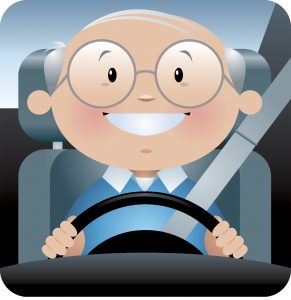 Driving is a multisensory experience that requires careful coordination and mastery of a wide array of skills. Understanding the rules of the road and having sufficient practice are only part of the equation. Being able to see the road and react to obstacles, signage and more is crucial. Drivers should not downplay the importance of visual acuity when they turn their ignition keys. Acceptable vision is involved in all components of driving. Motor vehicle operators need to have clear vision to read gauges and operate the controls of the car. Distance vision also is essential to identifying road hazards and seeing other cars on the road. The health resource All About Vision says aging and visual changes at any age can affect a person’s ability to see moving objects while one is in motion — as is the case while driving a car or truck. In addition, changes in peripheral vision can increase blind spots while driving and affect reaction time.
Driving is a multisensory experience that requires careful coordination and mastery of a wide array of skills. Understanding the rules of the road and having sufficient practice are only part of the equation. Being able to see the road and react to obstacles, signage and more is crucial. Drivers should not downplay the importance of visual acuity when they turn their ignition keys. Acceptable vision is involved in all components of driving. Motor vehicle operators need to have clear vision to read gauges and operate the controls of the car. Distance vision also is essential to identifying road hazards and seeing other cars on the road. The health resource All About Vision says aging and visual changes at any age can affect a person’s ability to see moving objects while one is in motion — as is the case while driving a car or truck. In addition, changes in peripheral vision can increase blind spots while driving and affect reaction time.
Aging motorists
The National Highway Traffic Safety Administration reports that 6,165 people ages 65 and older were killed in automobile accidents in 2015, representing 18 percent of all traffic crashes in the United States, and declining vision may have been a factor in many of those accidents. Older drivers can make certain changes to improve their safety on the roadways.
• Reduce driving at night. The group AAA says by age 60 eyes need three times as much light to see as they did at age 20. Over time pupils get smaller and do not dilate as much in dark conditions at night, making it harder to see. Limit driving at night as much as possible.
• Accommodate for glare. Invest in anti-glare coatings for glasses to minimize glare from the sun and oncoming headlights. • Be especially cautious at intersections. The Insurance Institute for Highway Safety says 40 percent of the fatal collisions that occur for people age 70 and older take place at intersections. Taking more time to assess oncoming traffic and make sure intersections are clear can save lives.
• Get frequent vision checks. Annual eye exams are recommended by the American Optometric Association. This can help older drivers be aware of shortcomings in their vision.
Other drivers
Drivers of any age with vision issues should take heed of their limitations and make modifications as needed.
• Driving with macular degeneration. Macular degeneration affects central vision. It happens when deterioration of the central portion of the retina occurs. The American Macular Degeneration Foundation says MD is the leading cause of vision loss. As MD impacts vision, driving may need to be reduced or ceased.
• Color blindness impacts driving. Those with color blindness may need to use caution when identifying traffic signals or the brake lights of other vehicles. It may take practice and driving with someone who sees colors to become comfortable.
• Cataracts can blur vision. Those with cataracts may have blurry vision and see halos around lights that can make driving challenging. Cataracts also may make it more difficult to see pedestrians against the landscape, especially at night. Treating cataracts can improve vision significantly. Many motor vehicle agency vision tests do not take into consideration all of the factors that can impact vision while driving. Seeking care for visual problems and changing driving habits when necessary can help people stay safe on the road.
